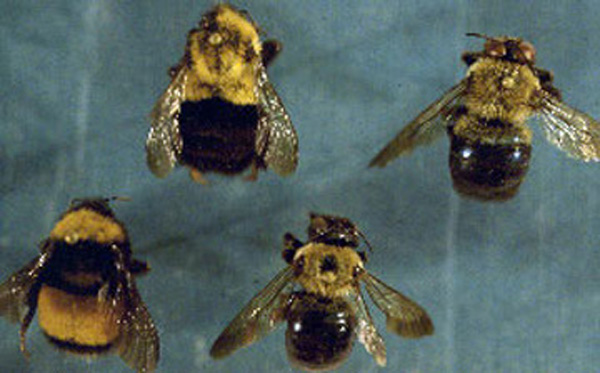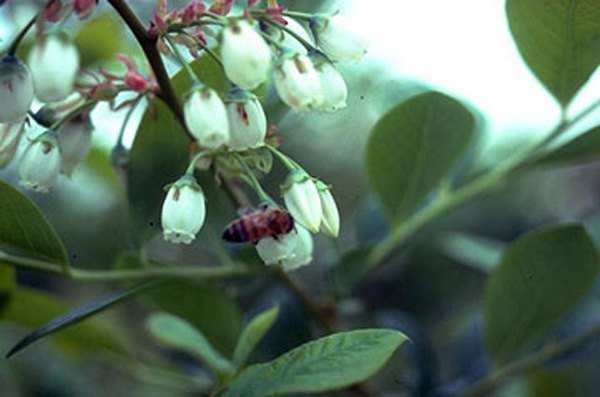Although there are many reasons for small berries including drought and variety selection, a common cause relates to pollination. Poor weather during flowering may inhibit bee flight, causing too few seeds to be produced. Seed number is proportional to berry size.
Other causes include:
Carpenter bees
Carpenter bees look similar to bumble bees (pictured), but carpenter bees can be distinguished by their narrower waist and smaller size. Carpenter bees chew holes in the sides of flowers, allowing other bees to bypass the pollination process and steal nectar.


Single variety planting
A large stand of a single variety will produce smaller berries than a mixed stand.
Poor shoot growth
There are situations where shoot growth is poor (in spring), but flower bud initiation is good (in late summer). It may be that shoots develop lots of flowers with few leaves the following year. Berry size will be small in this case.

Use these resources if you need additional help with diagnosis and to find solutions to your problem.


